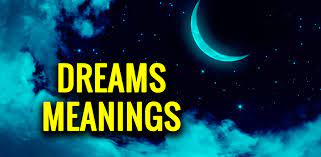Dreams have fascinated humanity for millennia, vivid dream ai serving as a canvas for our subconscious mind to paint its deepest thoughts, fears, and desires. The practice of interpreting dreams dates back to ancient civilizations, and it remains a compelling field of study today. This article explores the nuances of dream interpretation, providing insights into how dreams are understood and analyzed.
The Significance of Dreams
Dreams occur during the REM (Rapid Eye Movement) stage of sleep, a period characterized by increased brain activity. They can range from vivid, elaborate narratives to simple, fragmented scenes. While some view dreams as mere reflections of daily experiences, others believe they offer profound insights into our inner worlds.
Historical Perspectives on Dream Interpretation
- Ancient Civilizations: The interpretation of dreams can be traced to ancient cultures such as the Egyptians and Greeks. The Egyptians considered dreams to be messages from the gods, with dream interpreters playing a crucial role in deciphering these divine communications. Similarly, the Greeks, particularly through the work of Artemidorus, viewed dreams as prophetic and sought to understand their deeper meanings.
- Jungian Theory: In the early 20th century, Carl Jung revolutionized dream analysis by proposing that dreams are a window into the collective unconscious. Jung believed that dreams contain symbols and archetypes that reflect universal human experiences and personal psychological states. His approach emphasized the importance of understanding these symbols in the context of individual life experiences.
- Freudian Analysis: Sigmund Freud, a pioneer in psychoanalysis, offered a different perspective. He argued that dreams are a manifestation of repressed desires and unresolved conflicts. According to Freud, analyzing dreams can reveal hidden aspects of the psyche and provide insight into unconscious motivations.
Contemporary Approaches to Dream Interpretation
- Symbolism and Metaphors: Modern dream analysis often focuses on symbols and metaphors. Each element in a dream—whether it’s a person, object, or setting—can be interpreted as representing something more profound. For example, flying might symbolize a desire for freedom or escape, while being chased could reflect feelings of anxiety or avoidance.
- Personal Context: While some symbols are universal, the personal context of the dreamer is crucial. The meaning of a dream can vary greatly depending on the dreamer’s life circumstances, emotions, and experiences. Therefore, understanding the dreamer’s personal associations with dream elements is essential for accurate interpretation.
- Dream Journals: Keeping a dream journal is a popular method for tracking and analyzing dreams. By recording dreams regularly, individuals can identify recurring themes, symbols, and patterns. This practice can enhance self-awareness and provide valuable insights into one’s subconscious mind.
Common Dream Themes and Their Interpretations
- Falling: Dreams of falling often signify feelings of insecurity or loss of control. They may reflect anxieties about personal or professional challenges.
- Being Chased: This common dream theme may indicate that the dreamer is avoiding a problem or feeling overwhelmed by a situation in waking life.
- Losing Teeth: Dreams of losing teeth can be related to concerns about self-image, fear of aging, or feelings of inadequacy.
- Being Naked in Public: This type of dream often represents vulnerability or fear of being exposed and judged by others.
Practical Applications of Dream Interpretation
- Personal Growth: Understanding the messages in dreams can facilitate personal growth by addressing unresolved issues and gaining insights into one’s emotional state.
- Creative Inspiration: Many artists and writers find inspiration in their dreams. Dream imagery can serve as a source of creativity and innovation.
- Therapeutic Insights: In therapy, dream analysis can help uncover underlying psychological issues and assist in resolving inner conflicts.
Conclusion
Dream interpretation is a multifaceted practice that blends historical insights with modern psychological theories. Whether viewed through the lens of ancient traditions or contemporary approaches, dreams offer a valuable glimpse into the complexities of the human psyche. By exploring and understanding our dreams, we can gain deeper self-awareness and harness the potential for personal and creative growth.
References
- Jung, C. G. (1964). Man and His Symbols. Garden City, NY: Doubleday.
- Freud, S. (1900). The Interpretation of Dreams. London: The Hogarth Press.

